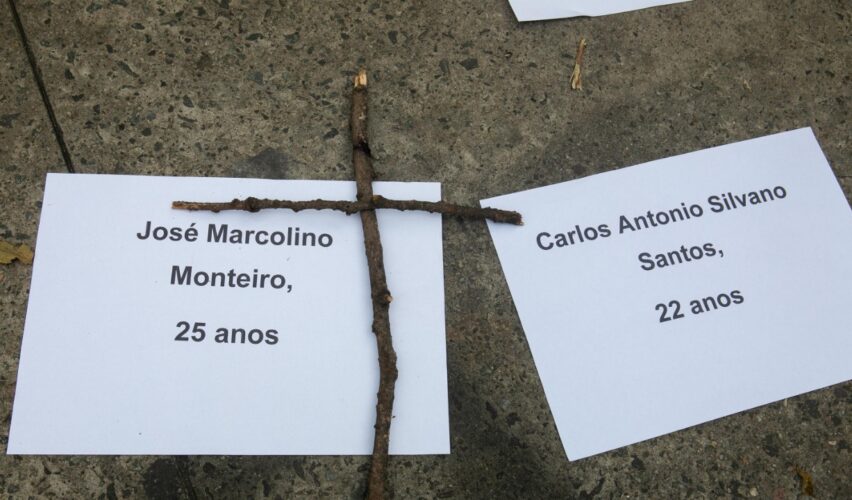caran- diru
02.10.1992 SP/br
To navigate, use the scroll
or arrow keys on the keyboard

Carandiru massacre
On October 2, 1992, at the São Paulo Detention House, police officers carried out the largest massacre in prisons in the history of Brazil, with 111 victims whose lives were under the responsibility of the State.

vítimas fatais
111 mortos
City
são paulo
date
02.10.1992
Status
awaiting consideration at the stf

Introduction
The Carandiru Massacre occurred on October 2, 1992, at the São Paulo Detention House, in the northern zone of the city. The police action, which fatally victimized at least 111 incarcerated individuals, began with a police intervention triggered with the aim of containing an alleged "riot."
Colonel Ubiratan Guimarães decided to deploy military police officers from the Tobias de Aguiar Ostensive Patrols (Rota), the Shock Troop, the Special Tactical Actions Group (Gate), and the Special Operations Command (COE). The order for the invasion was given within an hour. The massacre was triggered by the São Paulo military police's disproportionate use of force. A total of 341 Shock Troop police officers participated in Pavilion 9 of the prison.

The age range of the boys who died in Carandiru was 18 to 25 years old. Mostly black, had not been tried, they were detained as provisional prisoners.
”Deise Benedito, former expert at the National Mechanism for the Prevention and Combat of Torture

REPORT from family members
The omission of information by the State, with delays even in the disclosure of the names of the deceased victims, marked the inhumane treatment of the relatives of the dead from the day of the massacre. Along with demands for justice, the families also sought compensation for material and moral damages. In the 2000s, the Inter-American Commission on Human Rights held the Brazilian State responsible for the Carandiru massacre, but the Brazilian judiciary did not hold any authority accountable for the crimes. After 25 years since the case, only 43 families out of the 111 victims managed to receive compensation. Since 1992, the struggle of the families of incarcerated individuals has strengthened and continues to denounce the violations within prison walls.
Today, the work of the National Agenda for Decarceration is led by family members of people in prison.
